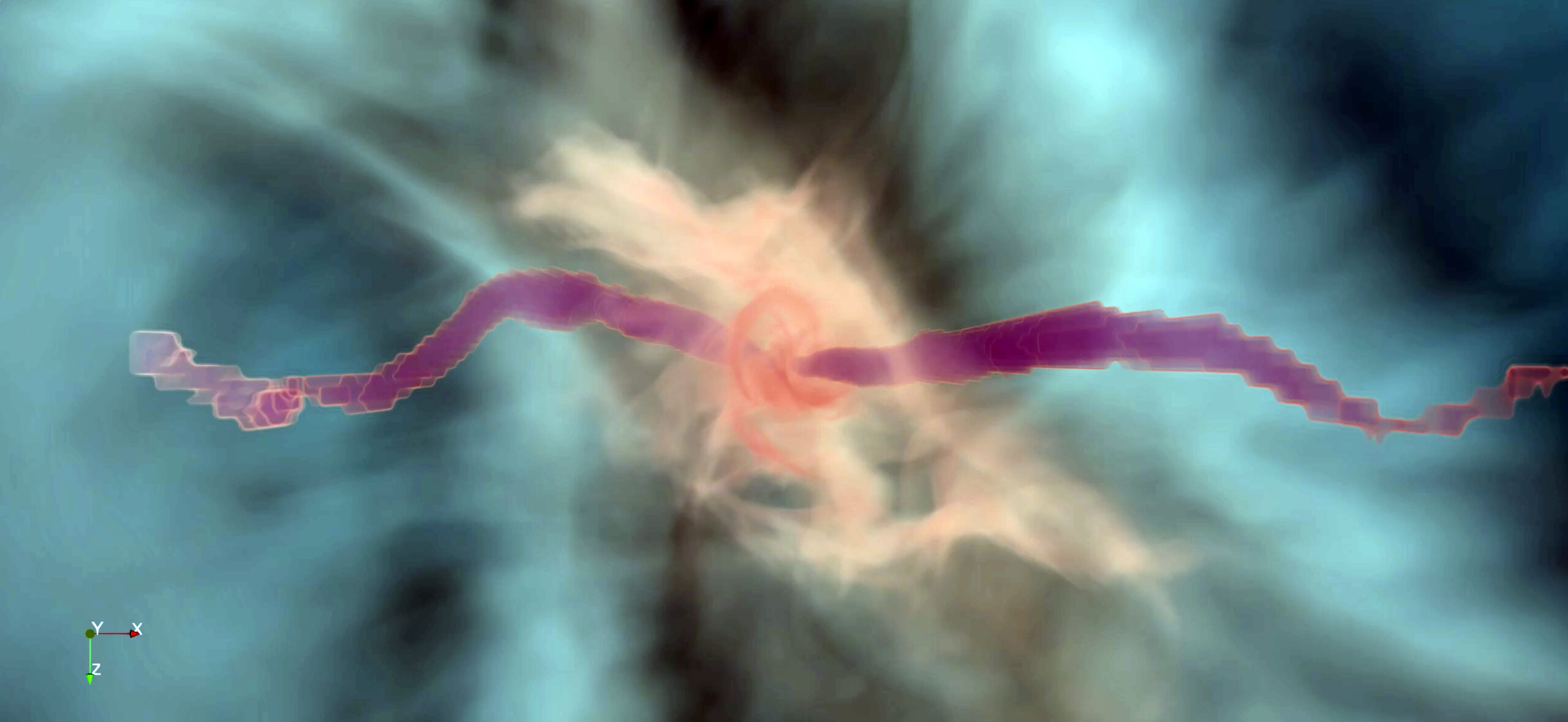New simulation also shows gamma ray bursts are 10 times rarer than previously thought
A Northwestern University-led team of astrophysicists has developed the first-ever full 3D simulation of an entire evolution of a jet formed by a collapsing star, or a “collapsar.”
Because these jets generate gamma ray bursts (GRBs) — the most energetic and luminous events in the universe since the Big Bang — the simulations have shed light on these peculiar, intense bursts of light. Their new findings include an explanation for the longstanding question of why GRBs are mysteriously punctuated by quiet moments — blinking between powerful emissions and an eerily quiet stillness. The new simulation also shows that GRBs are even rarer than previously thought.
The new study will be published on June 29 in Astrophysical Journal Letters. It marks the first full 3D simulation of the entire evolution of a jet — from its birth near the black hole to its emission after escaping from the collapsing star. The new model also is the highest-ever resolution simulation of a large-scale jet.

A close-up view of the disk (in orange) tilting, causing the jets (in purple) to wobble. Credit: Ore Gottlieb/Northwestern University
“These jets are the most powerful events in the universe,” said Northwestern’s Ore Gottlieb, who led the study. “Previous studies have tried to understand how they work, but those studies were limited by computational power and had to include many assumptions. We were able to model the entire evolution of the jet from the very beginning — from its birth by a black hole — without assuming anything about the jet’s structure. We followed the jet from the black hole all the way to the emission site and found processes that have been overlooked in previous studies.”
Gottlieb is a Rothschild Fellow in Northwestern’s Center for Interdisciplinary Exploration and Research in Astrophysics (CIERA). He coauthored the paper with CIERA member Sasha Tchekhovskoy, an assistant professor of physics and astronomy at Northwestern’s Weinberg College of Arts and Sciences.
Continue to the full Northwestern News story.
Learn More
- Learn more about The Astrophysical Journal Letters

